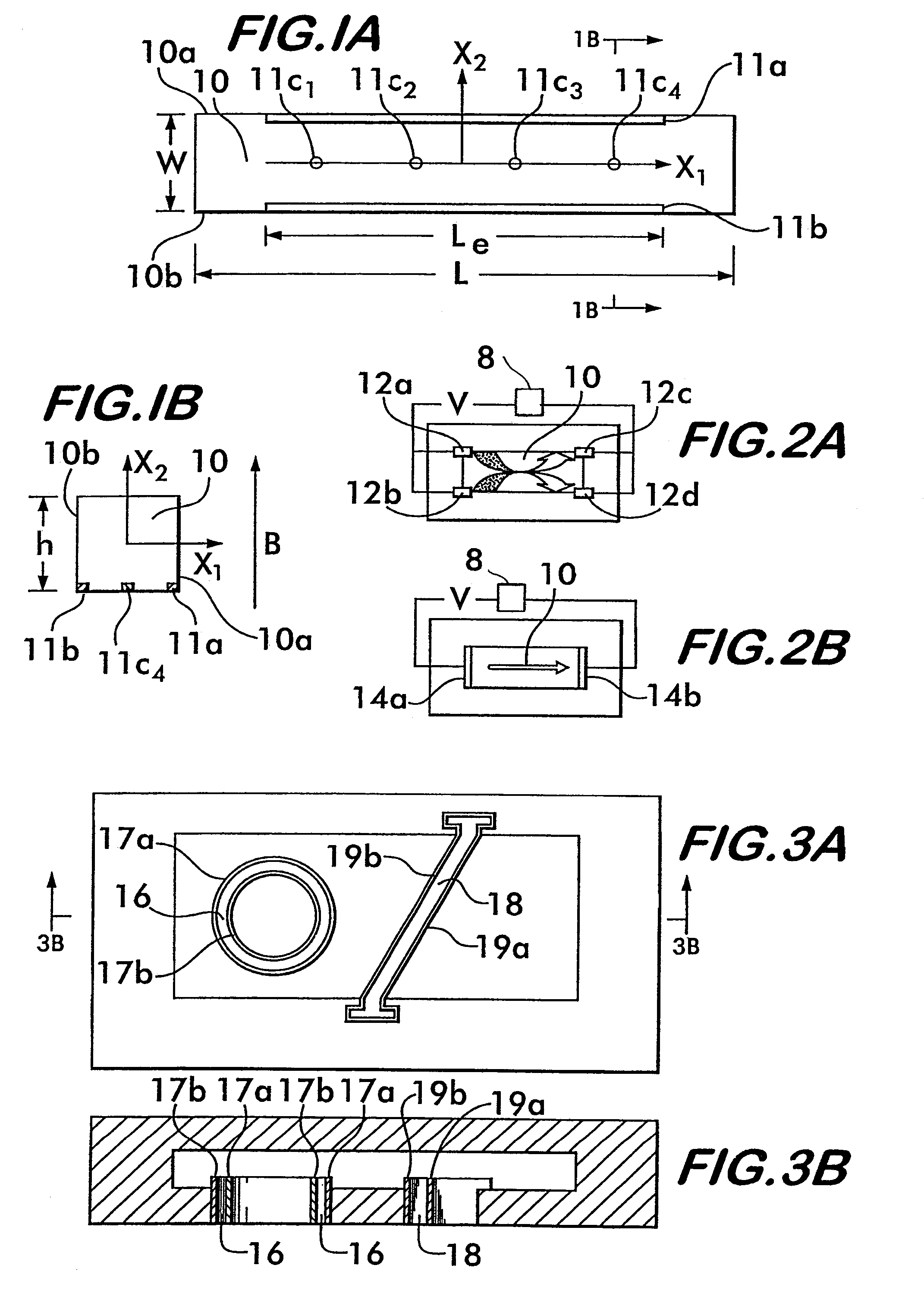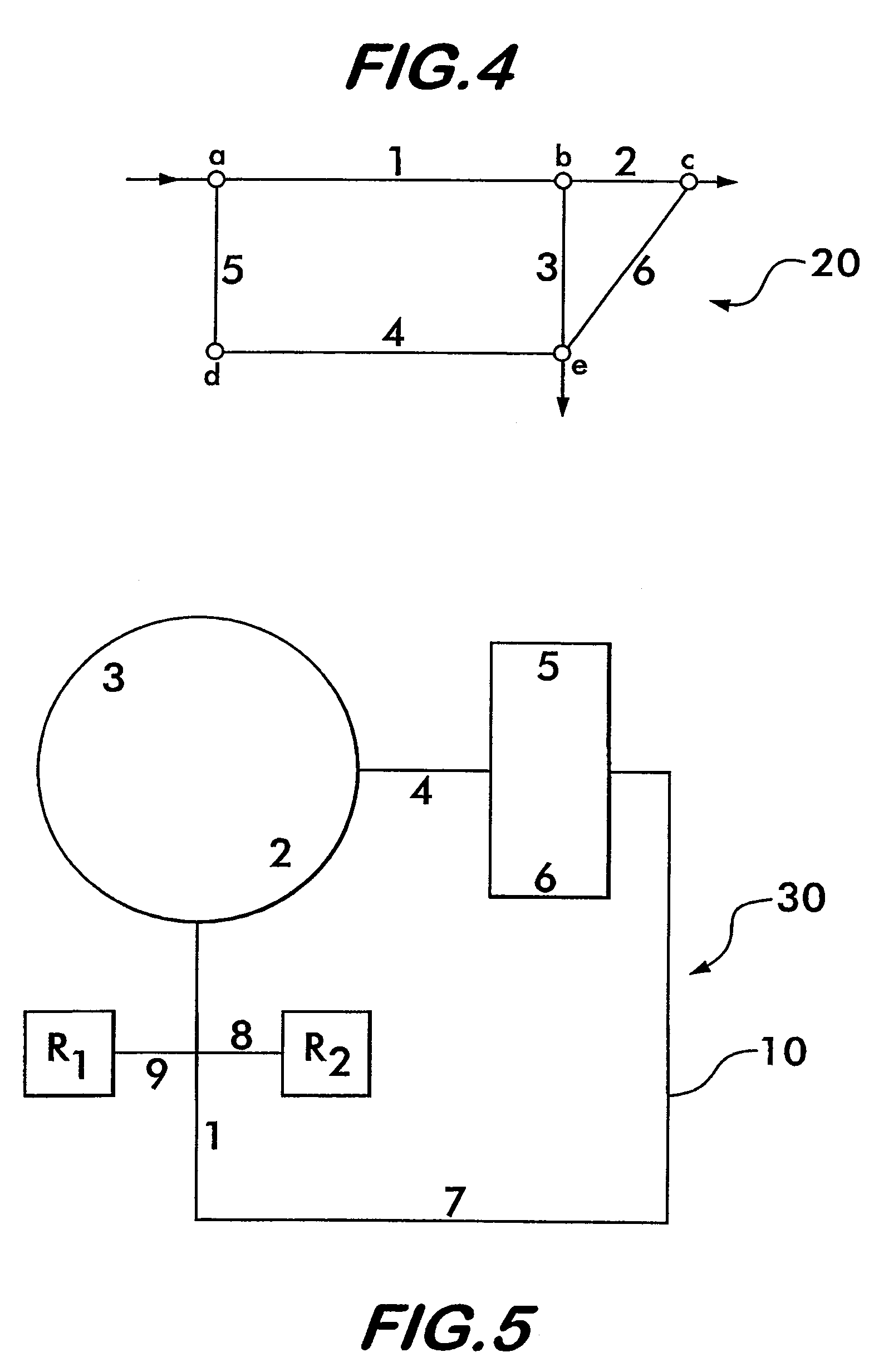Controlled magnetohydrodynamic fluidic networks and stirrers
a fluidic network and magnetohydrodynamic technology, applied in positive displacement liquid engines, laboratory glassware, machines/engines, etc., can solve the problems of significant heating of the solution, difficult insertion of moving components into these devices, and lack of effective means for either the control of liquid movement and movemen
- Summary
- Abstract
- Description
- Claims
- Application Information
AI Technical Summary
Benefits of technology
Problems solved by technology
Method used
Image
Examples
Embodiment Construction
[0043]Controlled-flow MHD fluidic networks, thermal cyclers, and chaotic advection stirrers for use in microfluidic devices for processing and analyzing biological and chemical samples such as laboratories on chips and micro-total analysis systems are described.
[0044]The controlled-flow MHD fluidic network comprises a plurality of connected and individually controlled conduits for the transmission of fluid each conduit having a pair of opposing walls, at least one pair of electrodes disposed along the opposing walls of the conduits, and at least one electrode controller in operational engagement with the electrodes for implementing an activation sequence of currents or potentials across the electrode pairs. In preferred form, the network further comprises an algorithm for determining the activation sequence. Movement of fluid through the network is accomplished in accordance with principles of magnetohydrodynamics which utilize the interaction of approximately perpendicularly orient...
PUM
 Login to View More
Login to View More Abstract
Description
Claims
Application Information
 Login to View More
Login to View More - R&D
- Intellectual Property
- Life Sciences
- Materials
- Tech Scout
- Unparalleled Data Quality
- Higher Quality Content
- 60% Fewer Hallucinations
Browse by: Latest US Patents, China's latest patents, Technical Efficacy Thesaurus, Application Domain, Technology Topic, Popular Technical Reports.
© 2025 PatSnap. All rights reserved.Legal|Privacy policy|Modern Slavery Act Transparency Statement|Sitemap|About US| Contact US: help@patsnap.com



